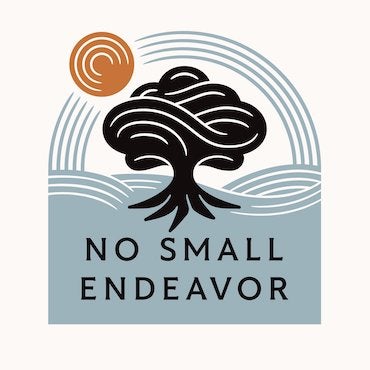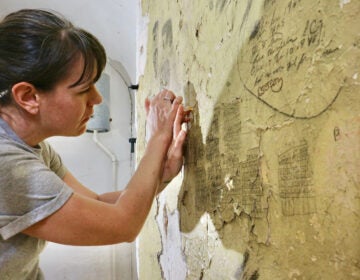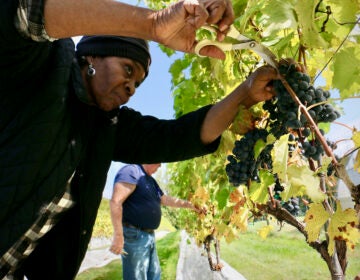An ancestral land returns to a Lenape family, who is building a center there to preserve nature, heritage, and culture
The Native American Advancement Corporation purchased 63 acres in Salem County to preserve and teach about Lenape people.
Listen 6:45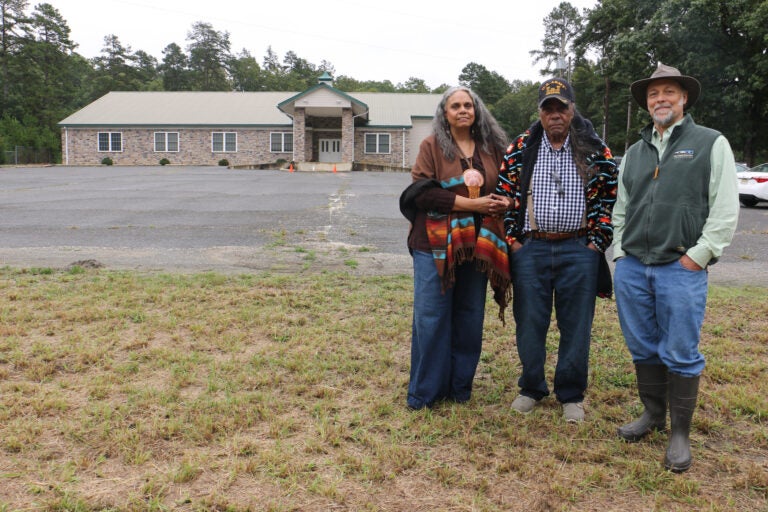
Tyrese Gould Jacinto and her father, Chief Mark Gould, of the Native American Advancement Corporation, acquired a church and 63 acres of land in Salem County with the help of Rob Ferber (right) of the New Jersey Conservation Foundation. The property will be used as a nature preserve and cultural center (Emma Lee/WHYY)
From Camden and Cherry Hill to Trenton and the Jersey Shore, what about life in New Jersey do you want WHYY News to cover? Let us know.
Tyrese Gould Jacinto credits her father’s generation for firmly establishing roots so that her children and grandchildren do not have to face the same perils of identity erasure that her father did growing up.
“We went all up and down the whole East Coast to all the pow-wow who you know to be with other communities,” she said, describing how her dad helped regroup the Nanticoke Lenni-Lenape Indians starting in the late 1970s.
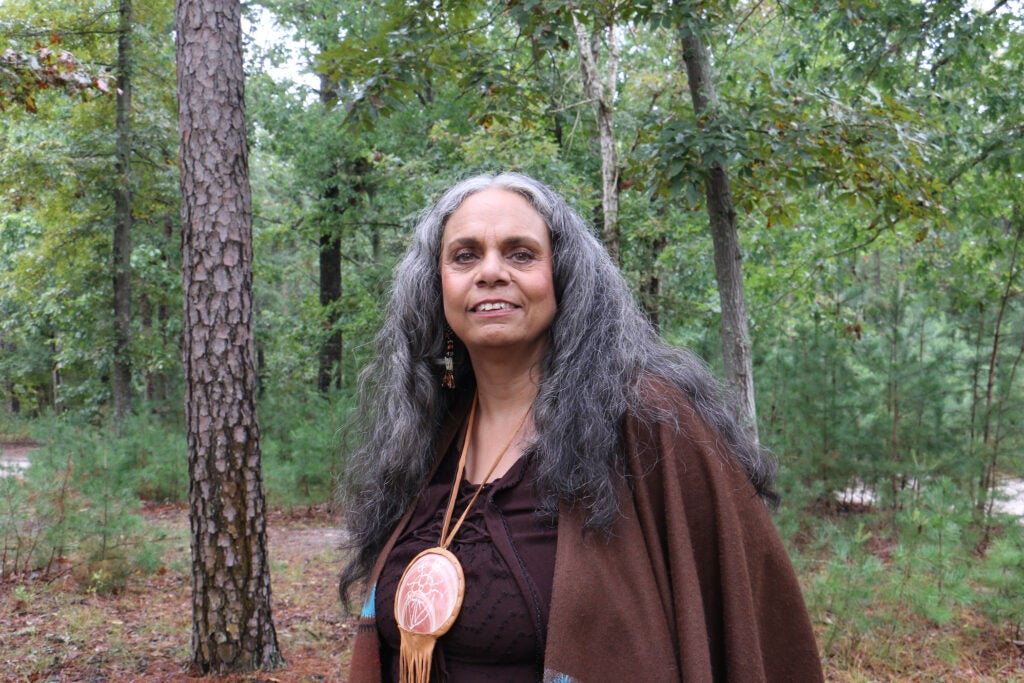
Jacinto is now following her father Mark “Quiet Hawk” Gould’s footsteps. Gould served as the chief of the Nanticoke Lenni-Lenape Tribal Nation for 45 years. Jacinto founded the Native American Advancement Corporation in 2009 with the goal to retain the future generations of her tribe in the South Jersey region.
“My generation got their education and they went someplace else because they had to make a living someplace else,” she said. “It’s our idea that we need to forge something here so that we can stay and make this place a better place so that we don’t continue to lose the generations with education and a better life and the so-called American dream.”
The organization, which trains in the fields of building sciences and energy conservation, started at Jacinto’s dining table. From there, it moved into a rented space in downtown Bridgeton. She eventually was able to purchase a building for 36 employees, but it still wasn’t big enough.
Then a miracle happened.
Jacinto, a carpenter and realtor by profession, stumbled upon 63 acres of land up for sale in Quinton Township, Salem County.
“It was listed under a place where I wasn’t looking,” she said. “It was hidden from me until the time came.”

The expired listing was for a former church on Gravelly Hill Road. The owners were asking for $1.2 million. Jacinto negotiated the price down to $820,000 plus closing costs. Her organization received financial support from the New Jersey Conservation Foundation, The Nature Conservancy, and the state’s Green Acres program to buy the land.
Plans are now being drawn for programming at the Cohanzick Nature Reserve, which will serve as a conservation, cultural, and educational center where visitors will learn about conservation, land stewardship, and Lenape culture.

Reclaiming ancestral land
The 63-acre property looks like a small “doughnut hole” in a forest that comprises thousands of acres left untouched by development.
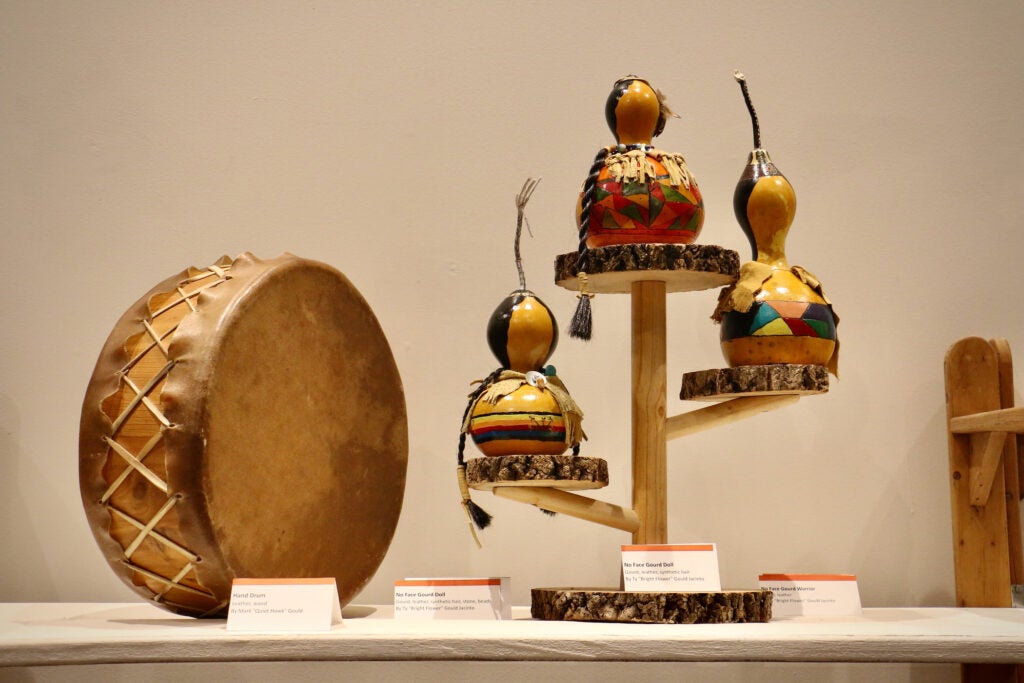
But for the Gould family, it is where their ancestors were born and raised, according to the chief.
“The families all stuck together,” he said. “You couldn’t find a wife because everybody down the street was your cousin. That’s how many of us were right here.”
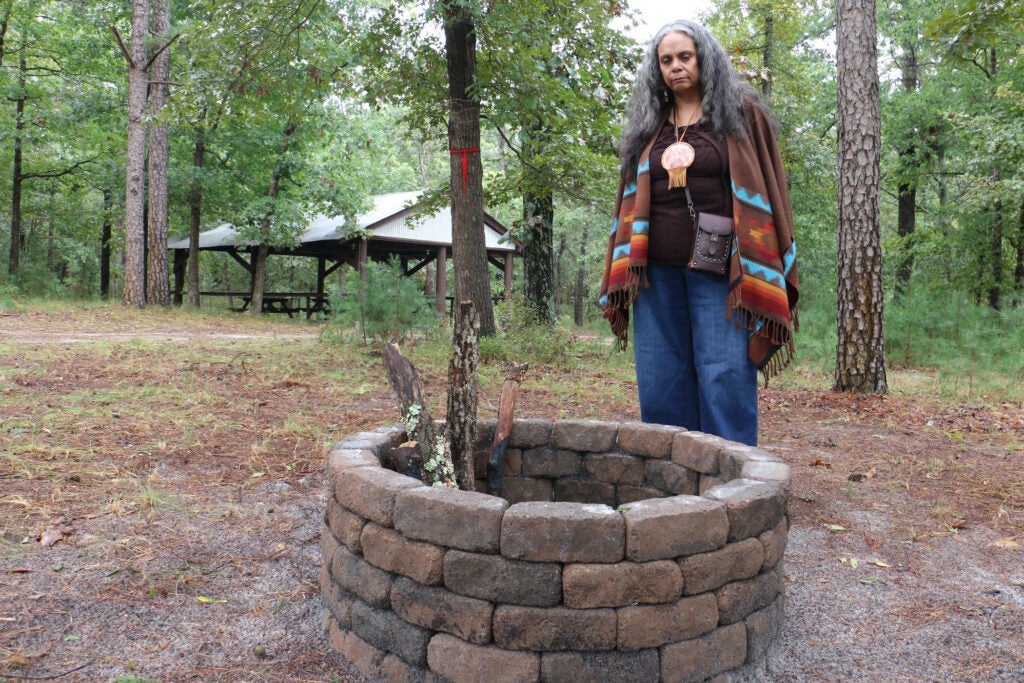
Gould and Jacinto believe there is an energy on the property that is accepting of them as stewards. Jacinto said she always feels it in her body when she steps into certain areas.
“I told my husband this,” she said. “He said ‘well, you can’t just discount that…energy cannot be destroyed or created. You’ve had births and deaths and you’ve had families and you’ve had tragedies and you have happiness all on that property for thousands of years in your family.”
The Nanticoke Lenni-Lenape have long been here
Jacinto’s tribe, the Nanticoke Lenni-Lenape people, have lived in Southern New Jersey for thousands of years, long before Europeans came.
Dr. William Carrigan, history professor at Rowan University, said records kept by visitors in the 16th century provide historians with much of what they know about the period.
“Certainly when those first records appear, it’s already clear that the Nanticoke Lenni-Lenape people have been living in the area for a long period of time,” he said.
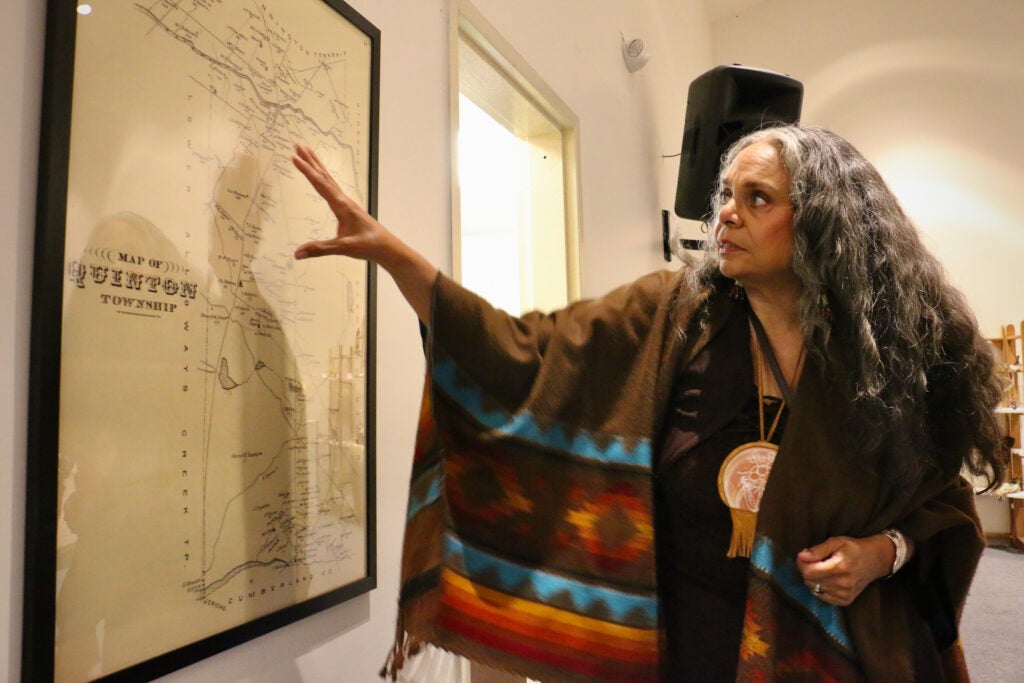
Over the centuries, the Lenape people survived tensions with early Dutch and Swedish settlers, devastating diseases, and having more than a million acres of land taken from them by the sons of William Penn, via the walking purchase.
In the mid-18th century, an offer was made to the remaining Lenape people in New Jersey.
“The relatively small number of Lenape…agree to give up the rest of their land claims, in exchange for a little over 3,000 acres of land in this first government supported reservation,” Carrigan said.
Indian Mills, also known as Brotherton, operated for more than 40 years in modern day Shamong Township, Burlington County.
Not all Lenape members left New Jersey, according to Dr. Janet Lindman, chair of the history department at Rowan University. While some were driven into Pennsylvania, others went as far away as Canada, Oklahoma, and Wisconsin. Those who stayed “hid in plain sight.”
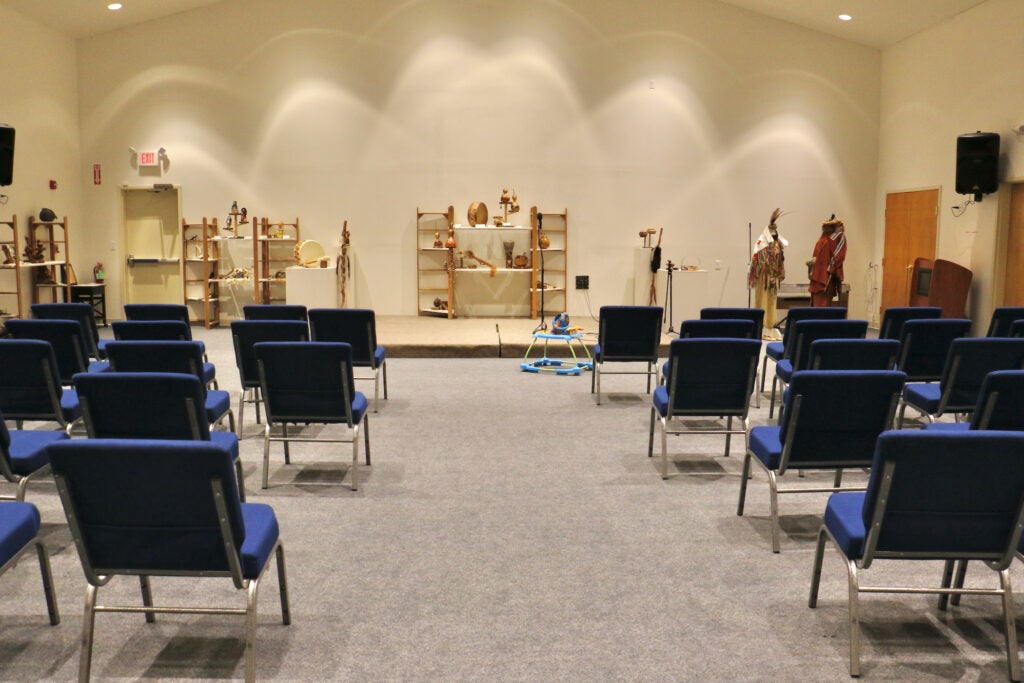
Systemic erasure
“New Jersey, beginning in the 19th century, began to change people’s race in the census,” Lindman said. “Instead of calling them Indian, they would call them colored. So, they count them as if they’re Black people even though they weren’t. And that was another way to kind of whitewash the history and say see they’re vanishing Indians. There are no Indians around here.”
Chief Gould remembers those days.
“We weren’t allowed to express our heritage, at all,” he said.”And one of the things that happened and the parents would come out and tell you that, ‘you can’t say that.’ And, we didn’t understand.”
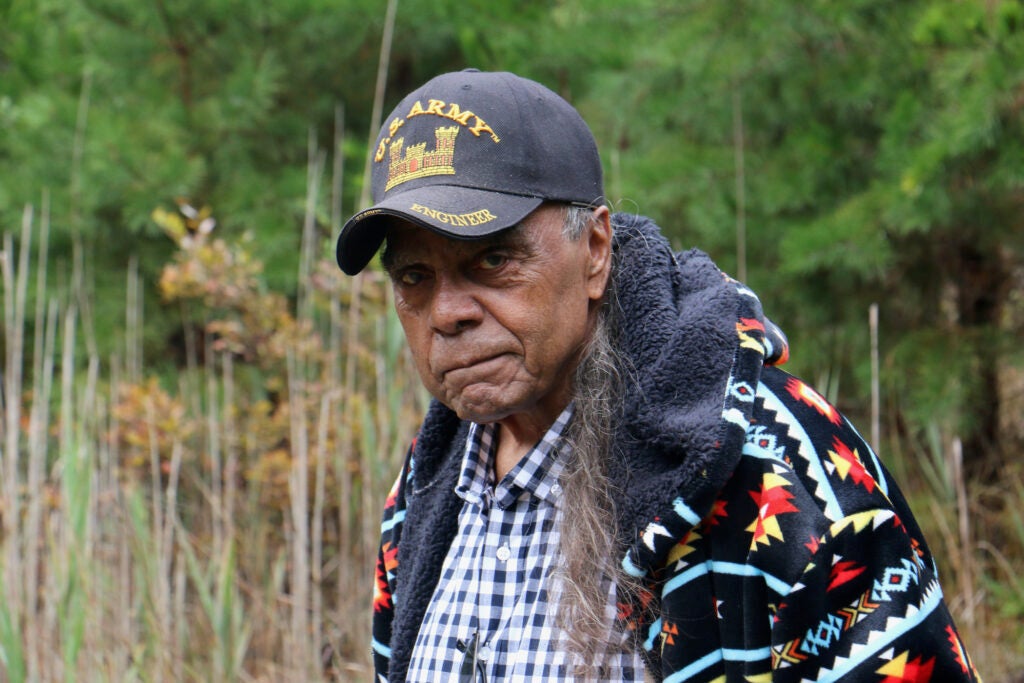
Gould said his family attended an AME Church because “that was what was afforded to them.” They were also under the same segregation rules as African Americans, and were forced to sit in the balcony at movie theaters, and on “special stools” at JCPenney.
“We had those kinds of restrictions that I couldn’t understand when I was younger,” he said.
A step forward in claiming identity and land
Attitudes started to change in the mid-1960s, with inspiration from the Civil Rights Movement.
“You get the forming of AIM, the American Indian movement in Minneapolis, in the late ‘60s,” said Lindman.
The American Indian Movement spoke up for American Indian rights, and for reclaiming tribal land after an effort under the Eisenhower Administration to de-tribalize Indians in the 1950s, which forced them to flee to the cities.
“But of course with ongoing racism, it didn’t really work,” Lindman added. “A lot of groups lost their land. And of course, it was sold off to developers and white people took it over and so their groups are trying to get them back.”
Lindman said the Native American Advancement Corporation purchasing their ancestral land is “a huge deal” because not all Native groups have been successful.
But Chief Gould has a different perspective.
“The creator saw to it that we got our land back. We didn’t take anything.”

Get daily updates from WHYY News!
WHYY is your source for fact-based, in-depth journalism and information. As a nonprofit organization, we rely on financial support from readers like you. Please give today.

